Behavior of Concrete under the Addition of High Volume of Polyolefin Macro Fiber and Fly Ash
Abstract
1. Introduction
2. Used Materials and Proportion of Mixing
3. Mechanical Properties Evaluation
4. Cracking Behavior of Concrete Samples
5. Fiber Concentration of Concrete
6. Conclusions
Author Contributions
Acknowledgments
Conflicts of Interest
References
- Yao, W.; Li, J.; Wu, K. Mechanical properties of hybrid fiber-reinforced concrete at low fiber volume fraction. Cem. Concr. Res. 2003, 33, 27–30. [Google Scholar] [CrossRef]
- Rousakis, T.C.; Tourtouras, I.S. Modeling of passive and active external confinement of RC columns with elastic material. ZAMM-J. Appl. Math. Mech./Z. Angew. Math. Mech. 2015, 95, 1046–1057. [Google Scholar] [CrossRef]
- Hannawi, K.; Bian, H.; Prince-Agbodjan, W.; Raghavan, B. Effect of different types of fibers on the microstructure and the mechanical behavior of Ultra-High-Performance Fiber Reinforced Concretes. Compos. Part B-Eng. 2016, 86, 214–220. [Google Scholar] [CrossRef]
- Zhang, P.; Li, Q.F. Effect of polypropylene fiber on durability of concrete composite containing fly ash and silica fume. Compos. Part B-Eng. 2013, 45, 1587–1594. [Google Scholar] [CrossRef]
- Husem, M. The effects of high temperature on compressive and flexural strengths of ordinary and high-performance concrete. Fire Saf. J. 2006, 41, 155–163. [Google Scholar] [CrossRef]
- Pakravan, H.R.; Latifi, M.; Jamshidi, M. Hybrid short fiber reinforcement system in concrete: A review. Constr. Build. Mater. 2017, 142, 280–294. [Google Scholar] [CrossRef]
- EN 14889-2. Fibres for Concrete. Polymer Fibres. Definitions, Specifications and Conformity; Czech Office for Standards, Metrology and Testing: Prague, Czech, 2008. [Google Scholar]
- Alberti, M.G.; Enfedaque, A.; Gálvez, J.C.; Agrawal, V. Reliability of polyolefin fibre reinforced concrete beyond laboratory sizes and construction procedures. Compos. Struct. 2016, 140, 506–524. [Google Scholar] [CrossRef]
- Banthia, N.; Gupta, P.; Yan, C.; Morgan, D.R. How tough is fiber reinforced shotcrete? Part 1. Beam tests. Concr. Int. 1999, 21, 59–62. [Google Scholar]
- Ugbolue, S.C. Polyolefin Fibers: Industrial and Medical Applications; CRC Press: Cambridge, UK, 2009. [Google Scholar]
- Pyle, R.W. Product and Method for Incorporating Synthetic Polymer Fibers into Cement Mixtures. U.S. Patent 6,258,159, 10 July 2001. [Google Scholar]
- Islam, G.S.; Gupta, S.D. Evaluating plastic shrinkage and permeability of polyolefin fibber reinforced concrete. Int. J. Sustain. Built Environ. 2016, 5, 345–354. [Google Scholar] [CrossRef]
- Saghi, H.; Delbari, H. The effect of the polyolefin fibers and concrete strength on polyolefin shrinkage cracking in concrete slabs. J. Concr. Res. 2015, 8, 35–46. [Google Scholar]
- Pujadas, P.; Blanco, A.; Cavalaro, S.H.; De la Fuente, A.; Aguado, A. Flat Suspended Slabs Reinforced only with Macro-Synthetic Fibres. In Proceedings of the 9th RILEM International Symposium on Fiber Reinforced Concrete (BEFIB 2016), Vancouver, BC, Canada, 19–21 September 2016; pp. 1300–1308. [Google Scholar]
- Liu, X.; Huang, Y.; Deng, C.; Wang, X.; Tong, W.; Liu, Y.; Huang, J.; Yang, Q.; Liao, X.; Li, G. Study on the Creep Behavior of Polypropylene Xiaolin. Polym. Eng. Sci. 2009, 49, 1375–1382. [Google Scholar] [CrossRef]
- Pujadas, P.; Blanco, A.; Cavalaro, S.H.; de la Fuente, A.; Aguado, A. Flexural Post-Cracking Creep Behaviour of Macro-Synthetic and Steel Fiber Reinforced Concrete. In Creep Behaviour in Cracked Sections of Fibre Reinforced Concrete, Proceedings of the International RILEM Workshop FRC-CREEP 2016; Serna, P., LlanoTorre, A., Cavalaro, S.H.P., Eds.; Springer: New York, NY, USA, 2016; pp. 77–87. [Google Scholar]
- Gowri, T.V.; Sravana, P.; Rao, P.S. On the Relationship between Compressive Strength and Water Binder Ratio of High Volumes of Slag Concrete. Int. J. Appl. Eng. Res. 2016, 11, 1436–1442. [Google Scholar]
- Rahmani, K.; Shamsai, A.; Saghafian, B.; Peroti, S. Effect of Water and Cement Ratio on Compressive Strength and Abrasion of Microsilica Concrete. Middle-East J. Sci. Res. 2012, 12, 1056–1061. [Google Scholar]
- Apebo, N.S.; Shiwua, A.J.; Agbo, A.P.; Ezeokonkwo, J.C.; Adeke, P.T. Effect of Water-Cement Ratio on the Compressive Strength of gravel-crushed over burnt bricks concrete. Civ. Environ. Res. 2013, 3, 74–80. [Google Scholar]
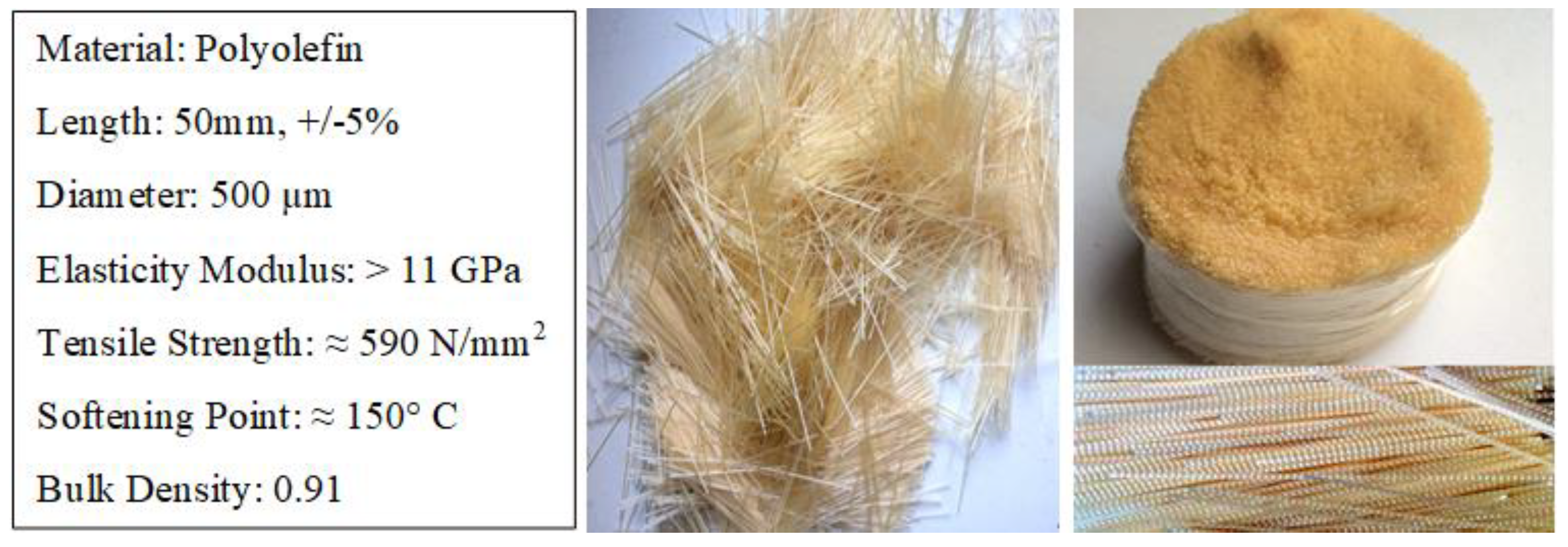

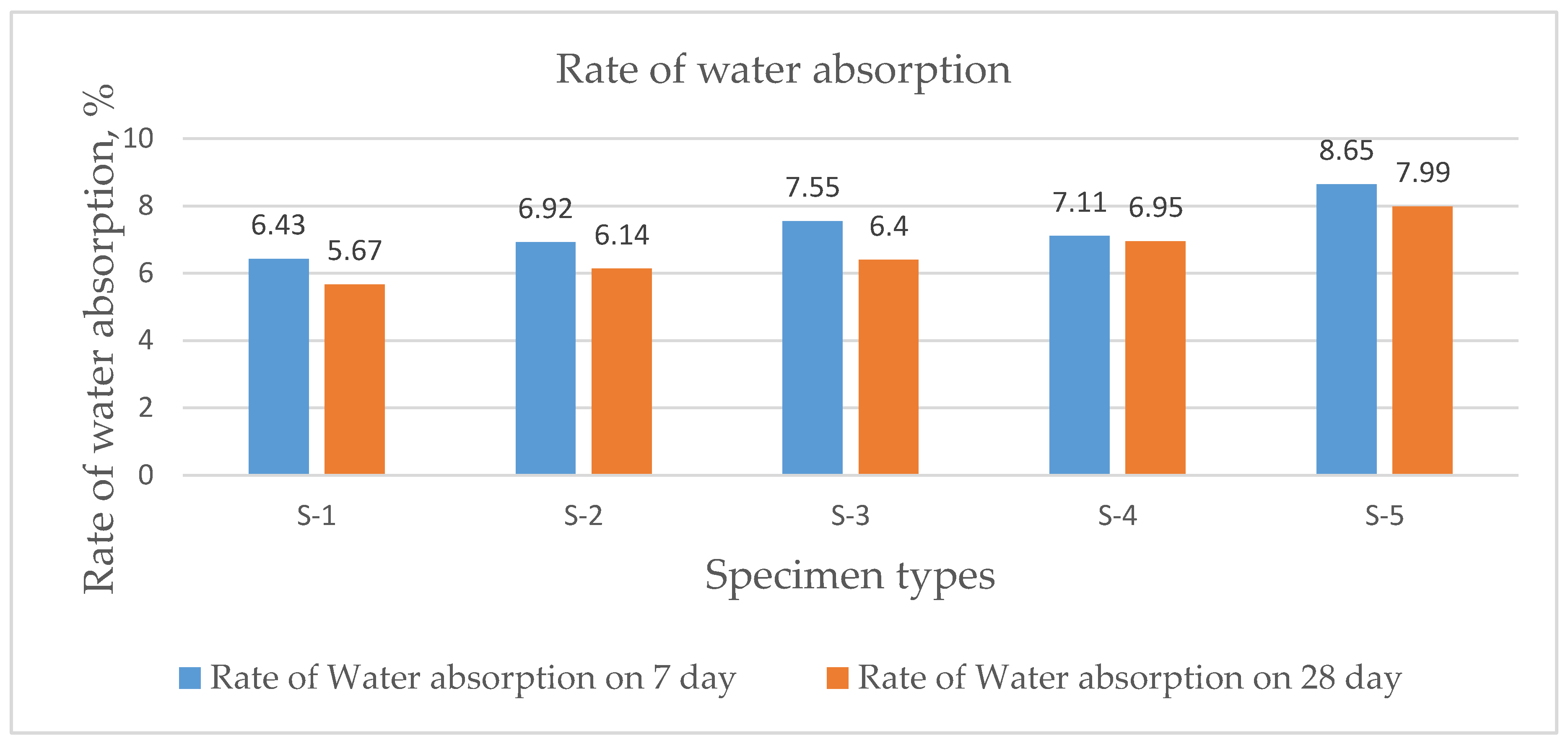

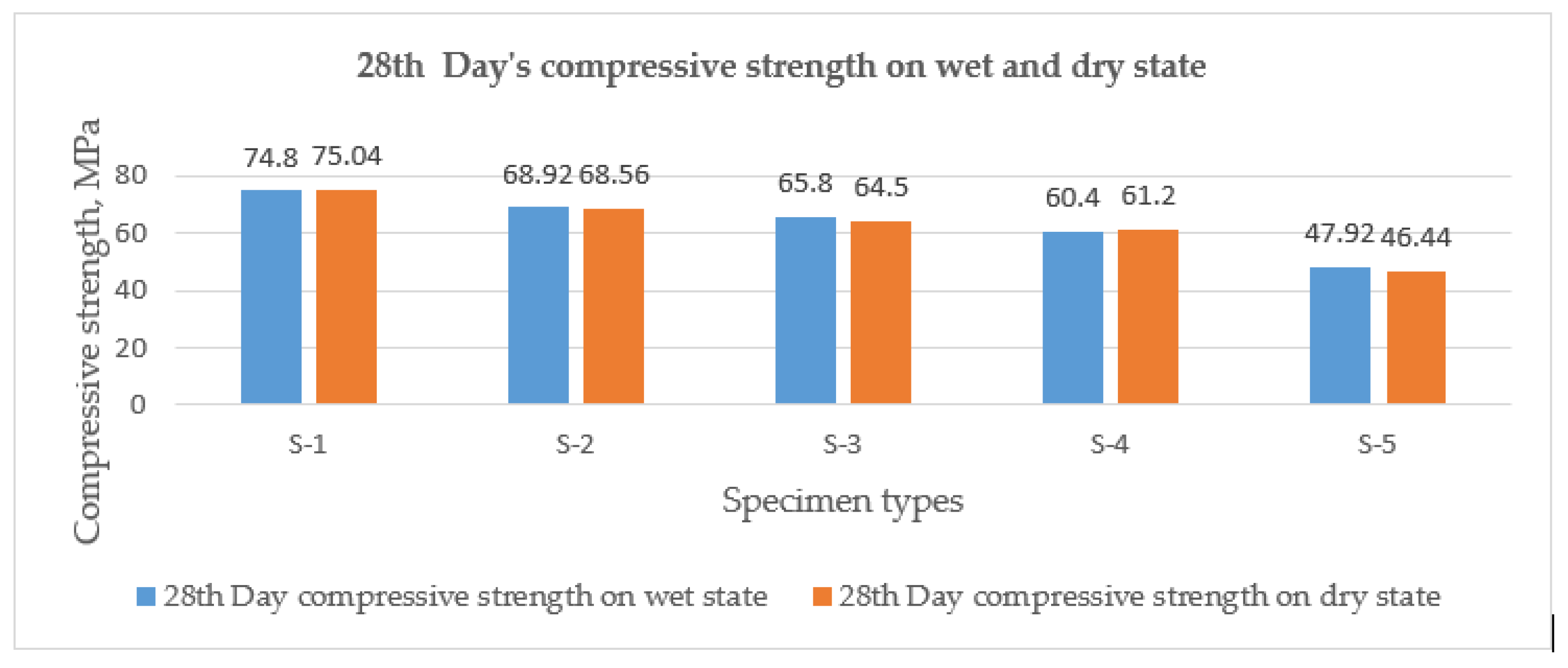
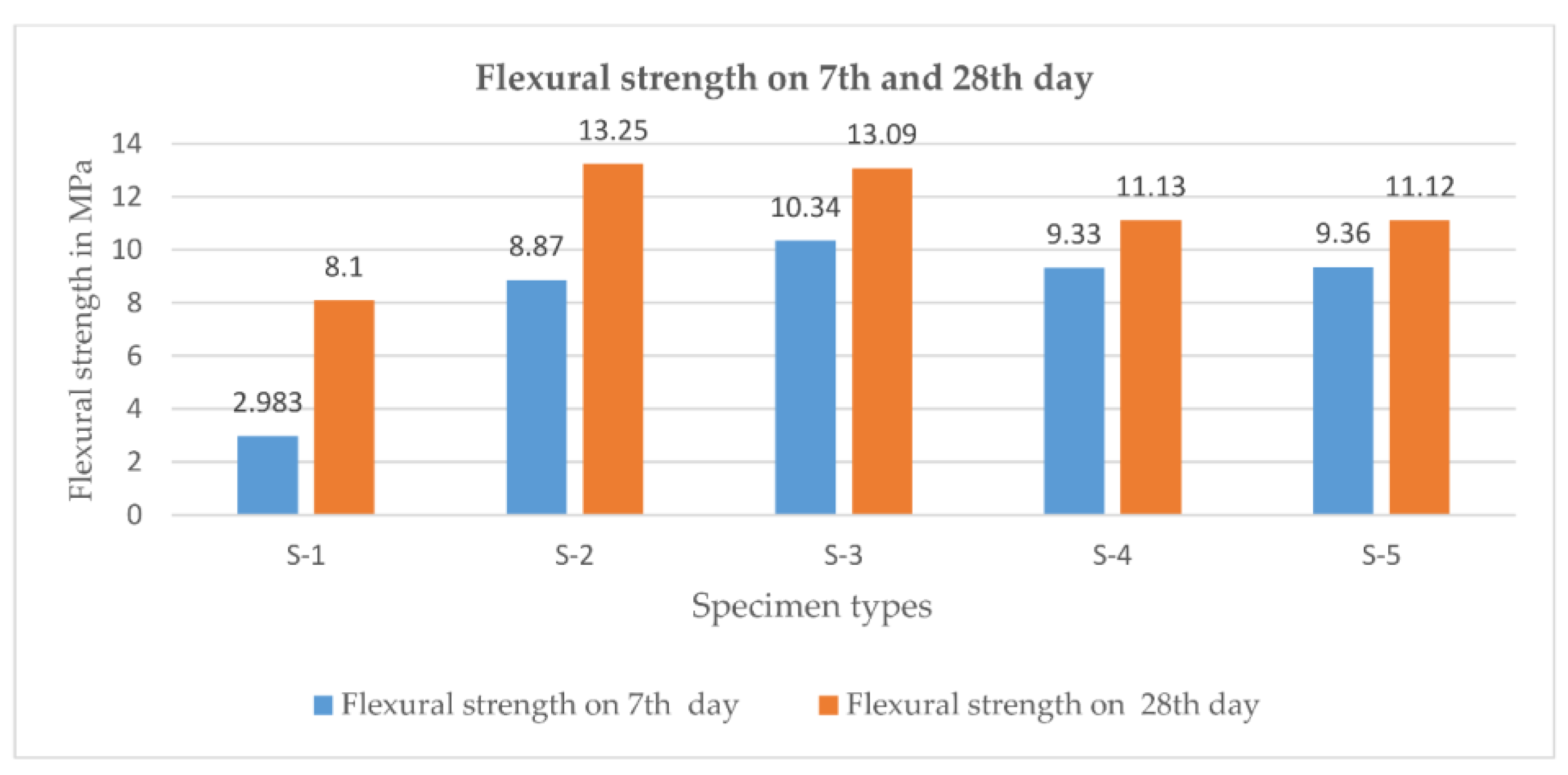

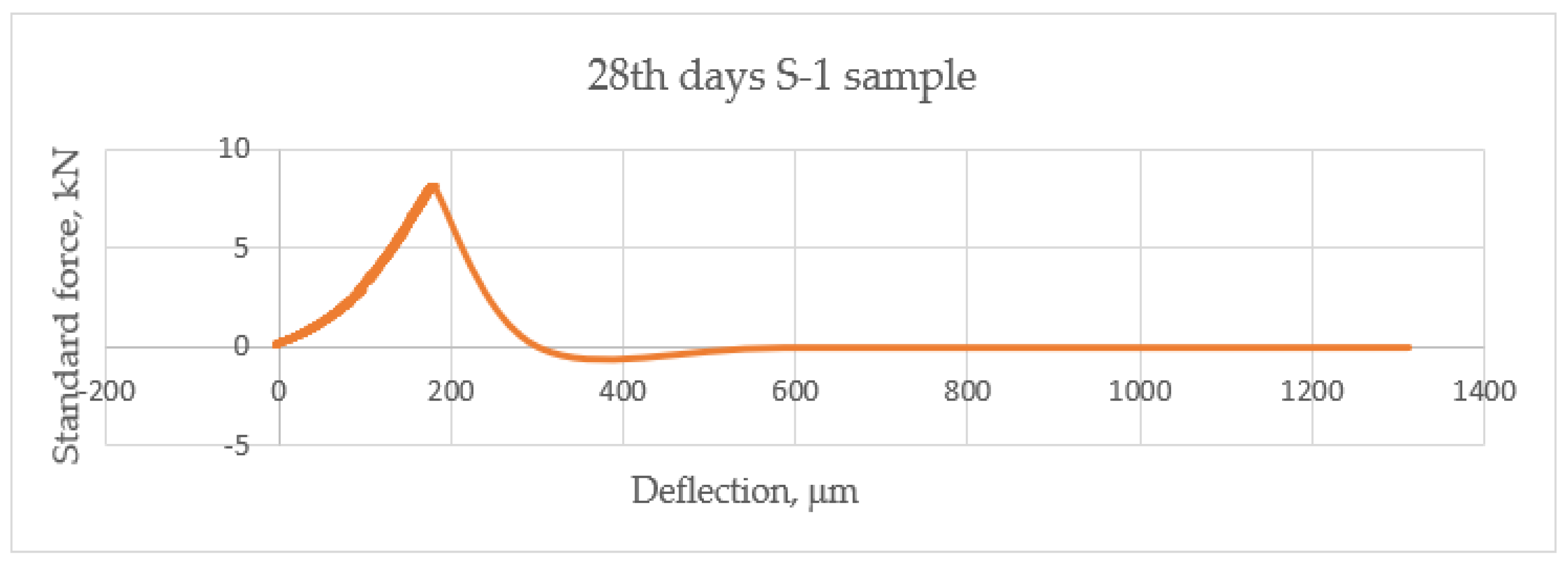
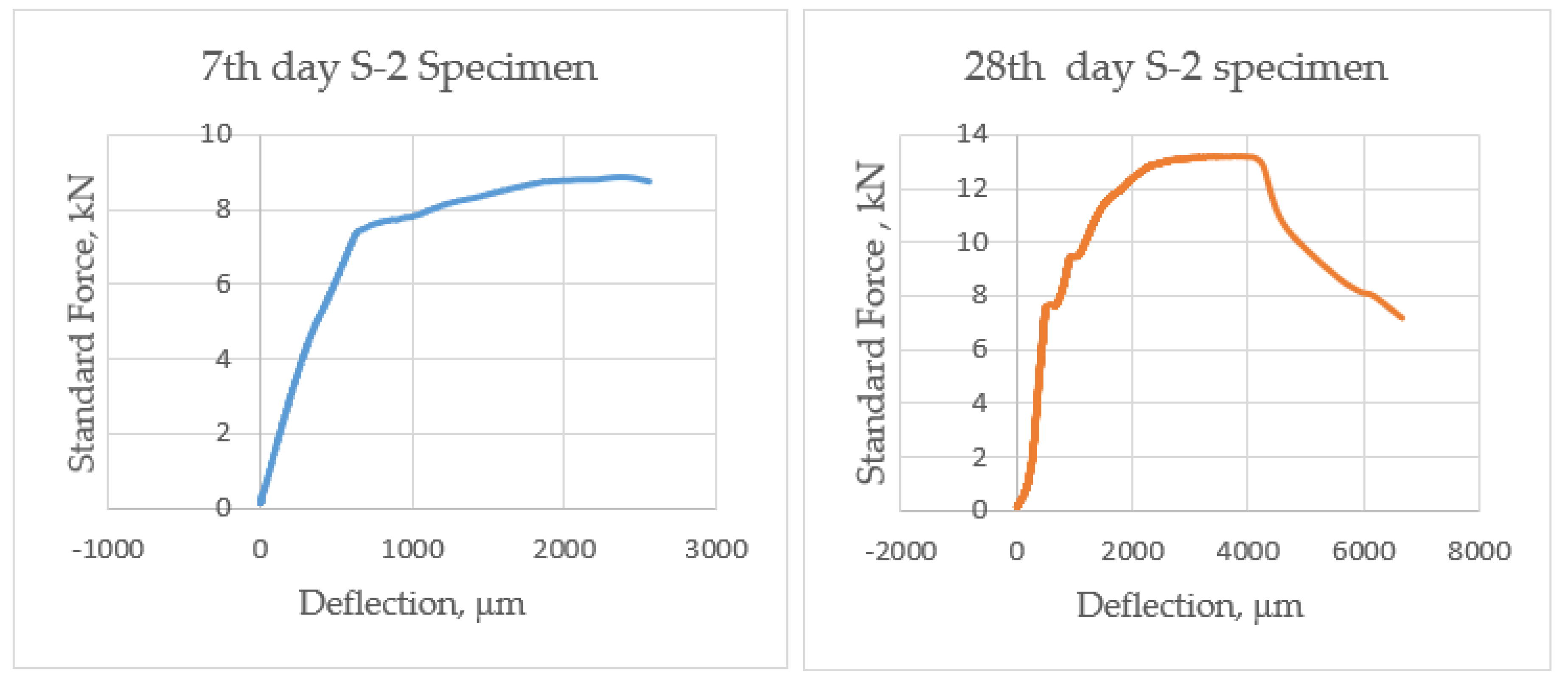
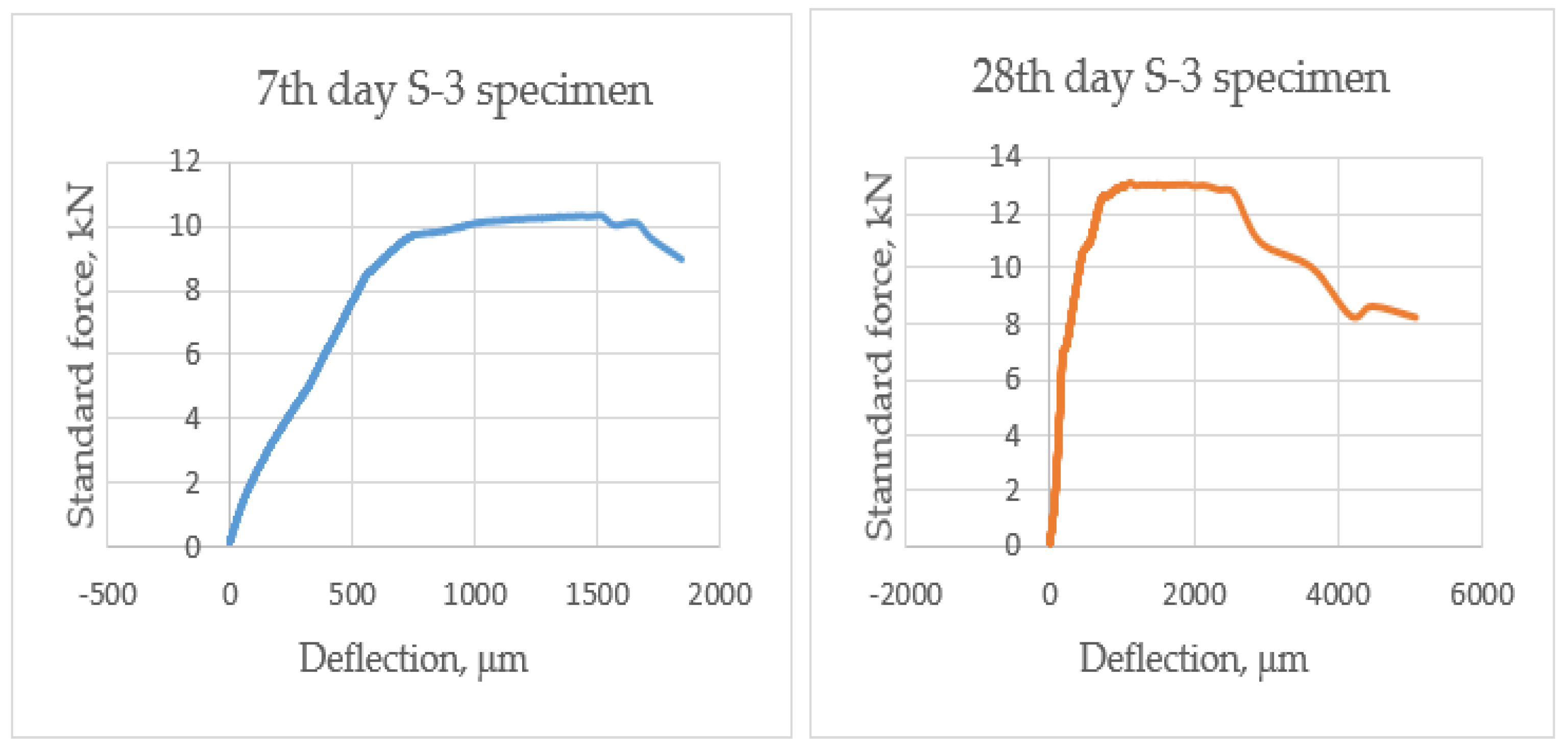
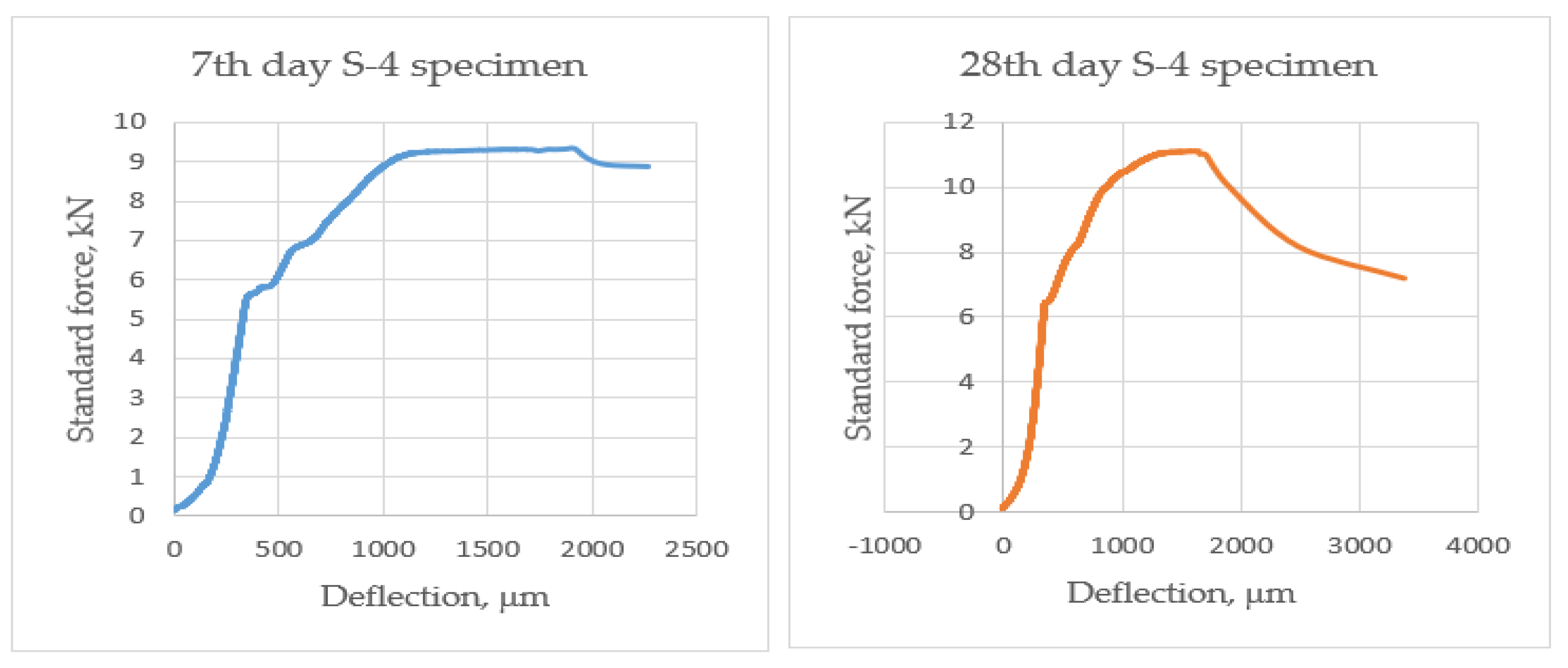
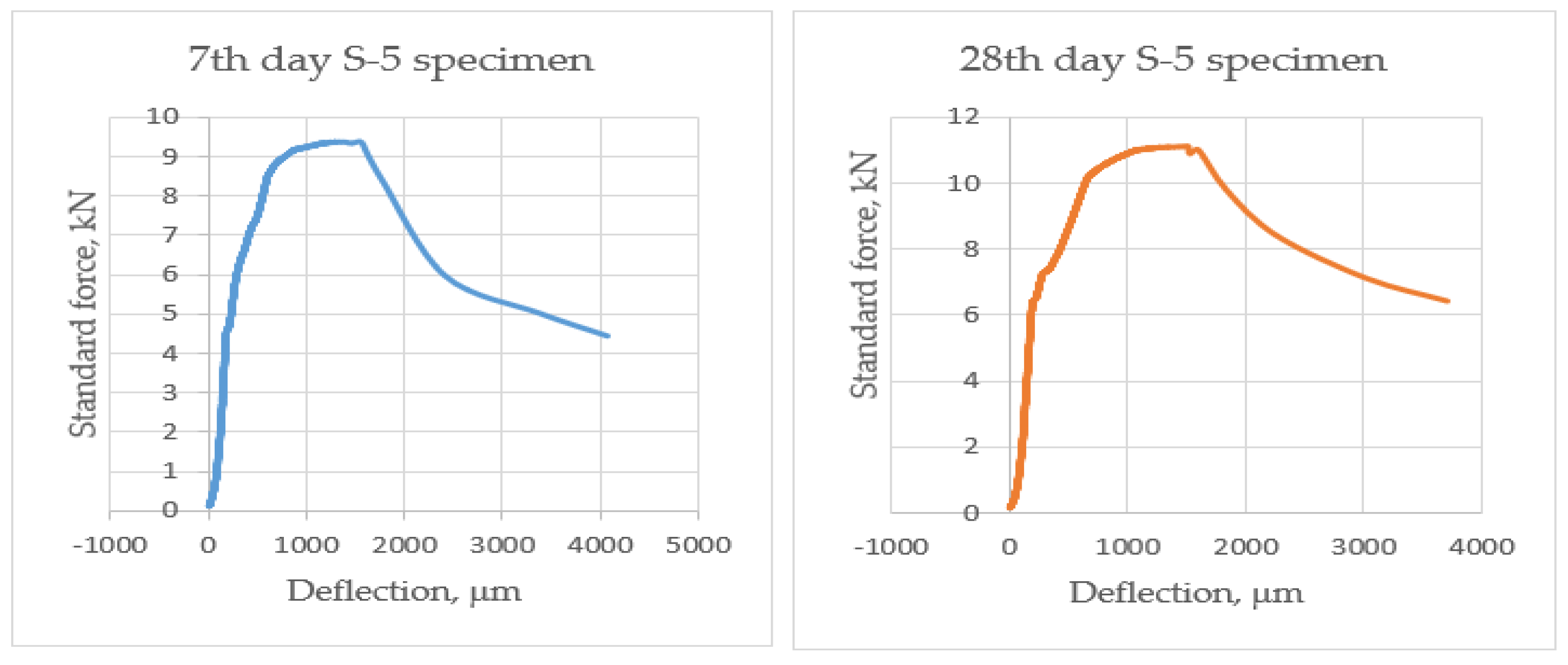

| Materials Used for Concrete Mixture Preparation | Quantity of the Materials for 1 m3 of Concrete | |
|---|---|---|
| Fine aggregate | 1640 kg | |
| Cement | 506 kg | |
| Water | 170 (W/C ratio 0.335) | |
| Fly ash | 92 kg (18.18% of cement mass) | |
| Super plasticizer | 7.6 kg (1.5% mass of cement) | |
| Polyolefin fibers | S-1 | No fiber |
| S-2 | 10 kg | |
| S-3 | 25 kg | |
| S-4 | 35 kg | |
| S-5 | 25 kg | |
| Type of Specimen | S-1 | S-2 | S-3 | S-4 | S-5 |
|---|---|---|---|---|---|
| No of fibers in cross-section | 0 | 38 | 75 | 102 | 95 |
© 2018 by the authors. Licensee MDPI, Basel, Switzerland. This article is an open access article distributed under the terms and conditions of the Creative Commons Attribution (CC BY) license (http://creativecommons.org/licenses/by/4.0/).
Share and Cite
Adhikary, S.K.; Rudzionis, Z. Behavior of Concrete under the Addition of High Volume of Polyolefin Macro Fiber and Fly Ash. Fibers 2018, 6, 38. https://doi.org/10.3390/fib6020038
Adhikary SK, Rudzionis Z. Behavior of Concrete under the Addition of High Volume of Polyolefin Macro Fiber and Fly Ash. Fibers. 2018; 6(2):38. https://doi.org/10.3390/fib6020038
Chicago/Turabian StyleAdhikary, Suman Kumar, and Zymantas Rudzionis. 2018. "Behavior of Concrete under the Addition of High Volume of Polyolefin Macro Fiber and Fly Ash" Fibers 6, no. 2: 38. https://doi.org/10.3390/fib6020038
APA StyleAdhikary, S. K., & Rudzionis, Z. (2018). Behavior of Concrete under the Addition of High Volume of Polyolefin Macro Fiber and Fly Ash. Fibers, 6(2), 38. https://doi.org/10.3390/fib6020038






